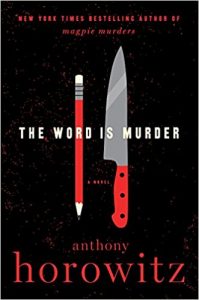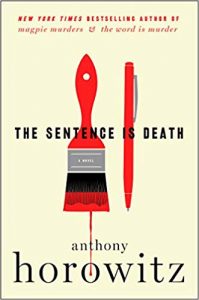 Chaos at the Lazy Bones Bookshop (Halloween Bookshop Mystery, #1) by Emmeline Duncan
Chaos at the Lazy Bones Bookshop (Halloween Bookshop Mystery, #1) by Emmeline Duncan Format: eARC
Source: supplied by publisher via Edelweiss
Formats available: paperback, ebook, audiobook
Genres: cozy mystery, holiday mystery, mystery
Series: Halloween Bookshop Mystery #1
Pages: 256
Published by Kensington Cozies on July 23, 2024
Purchasing Info: Author's Website, Publisher's Website, Amazon, Barnes & Noble, Kobo, Bookshop.org, Better World Books
Goodreads
Bailey Briggs adores her year-round Halloween-themed town of Elyan Hollow, Oregon, but when she takes over her grandfather’s beloved bookshop, Lazy Bones Books, she accidentally discovers the town’s secret dark side . . .
Normally, spooky season is Bailey Briggs’ favorite time of year, and her Halloween-themed small town’s time to shine. But between managing Lazy Bones Books, working on her graphic novel-in-progress, and running the Spooky Season Literary Festival, Bailey hardly has a moment to enjoy Elyan Hollow’s spot-on seasonal vibes. Not to mention, at every turn she seems to be tripping over the contentious crew of Gone Ghouls, a ghost-hunting reality TV show currently filming around town. Bailey tries to stay focused on the Lit Festival, which is supposed to kick off Elyan Hollow’s annual Halloween Fair; instead, this year’s festival begins with a murder . . .
It’s bad enough Bailey discovered the victim, but now, as a lead suspect with some (admittedly) damning evidence pointing her way, she’s got to clear her name! With the help of her librarian friend, Colby, and Jack Skeleton, her world-class bookshop dog (and the absolute bestest boy ever), Bailey sets out to solve a murder . . .
As her investigation weaves through family secrets, professional rivalries, and town feuds, the list of suspects is growing fast . . . and unfortunately, so is the list of victims. If Bailey doesn’t find the killer soon, Elyan Hollow’s haunted reputation will get a little too real . . .
My Review:
Elyan Hollow, Oregon seems like just the kind of idyllic small town that makes people who read small town cozy mysteries – which this most definitely is – want to live in a small town just like it.
 Elyan Hollow reads as if it’s exactly what you’d get if real towns like Frankenmuth, Michigan or nearby Leavenworth, Washington had decided to embrace The Nightmare Before Christmas all year round instead of, well, actual Christmas.
Elyan Hollow reads as if it’s exactly what you’d get if real towns like Frankenmuth, Michigan or nearby Leavenworth, Washington had decided to embrace The Nightmare Before Christmas all year round instead of, well, actual Christmas.
The town has truly embraced the ‘Spooky Season’, after a cozy horror movie was filmed there decades ago. The movie-set tourists brought so much to the town that Elyan Hollow decided to ‘lean in’ all year round.
Which explains both the name of Bailey Briggs’ bookstore, Lazy Bones Books, AND the theme of the town’s first annual literary festival, sponsored by Lazy Bones, of course, as part of the kickoff for this year’s Halloween season extravaganza.
Both fortunately and unfortunately, it also explains the town’s nearly magnetic attraction for horror authors (YAY!), paranormal romance writers (DOUBLE YAY!) and ghost hunting TV and streaming series (definitely not so yay).
Bailey has her hands full of the festival when all of those magnetic attractions collide in murder – with her shop and her festival at the center of a local detective’s suspicions and investigations.
Leaving Bailey, as the prime suspect in not one but two murders, desperate to clear her name. Which leaves her in precisely the situation that has put so many reluctant but innocent characters on the road to becoming amateur detectives.
Especially as Bailey has her own personal mystery to solve in the midst of this case. The first murder victim might very well have been the name that belonged in the blank spot on Bailey’s birth certificate labeled ‘father’.
Escape Rating B: There are a LOT of mysteries in Elyan Hollow – and the murder turns out to be the least interesting of them all. It’s also one of the few mysteries that gets resolved by the end of the book. Which is a good thing as this is the first book in a projected series.
On one side, there are the mysteries surrounding Bailey’s family – most of which do not get solved in this first book but absolutely do have an impact on Bailey and the story.
Bailey was raised by her grandparents because her teenage mother refused to let an accidental pregnancy spoil her plans to become a doctor. Which she did. Bailey grew up feeling like an afterthought in her mother’s life, well aware that the family her mother created at the proper time is her mother’s REAL family in seemingly all the ways that counts.
Bailey’s grandparents WERE her parents in all the ways that counted, but there are still plenty of holes in Bailey’s heart as well as in her knowledge of where she came from – such as the totally missing information about who her sperm donor might have been.
There are also plenty of current family secrets, as her grandfather has already deeded the family bookshop to Bailey but has not revealed that fact to Bailey’s uncle who is constantly scheming and digging for ways to wrest control of it for its prime downtown location. That’s a mystery that must be coming to a head later because it’s still VERY murky at the end of this book.
Then there’s the festival, the ghost program, and the returning hometown boys made more-or-less good who have come back for one or the other. Both men went to high school with Bailey’s mom, but neither have returned home in the intervening years. Both have secrets that may possibly have to do with Bailey – but it’s no secret that neither can stand the other.
Yet, when one of them is murdered, all the police suspicion falls on Bailey – which feels like more than a bit of a stretch on the part of an overwhelmed detective grabbing at straws and circumstances instead of anything remotely like a real investigation.
Which is where Bailey’s amateur efforts inevitably come in.
I fell in love with Elyan Hollow, and I REALLY liked Bailey and her ‘Scooby Gang’. It helps a LOT that Bailey has every reader’s dream job of owning and running a bookstore – and that it’s dreamy enough that she’s being VERY successful at it though dint of her own hard work. Her best friend is one of the librarians at the local public library, and their bonds to books and over books really shine through.
 The mysteries that needed to get solved got solved, but the family mess is, well, messy and that looks like it will continue to be so in the books ahead.
The mysteries that needed to get solved got solved, but the family mess is, well, messy and that looks like it will continue to be so in the books ahead.
In the end, this series starter reminded me a lot and fondly of Small Town, Big Magic (before the protagonist discovers that she’s really a witch) and Shady Hollow (only with human people instead of animal people). The small towns all have similar charms and the characters have similar and endearing quirks. (Check out my review of the latest book in the Shady Hollow series, Summers End, later this week to see if you agree.)
All of which means that I’ll be keeping my reading eye out for the second book in the Halloween Bookshop Mystery series whenever it appears out of the mist of anticipated reads.

 The Mummy of Mayfair (An Irregular Detective Mystery #2) by
The Mummy of Mayfair (An Irregular Detective Mystery #2) by 
 Requiem for a Mouse (Cat in the Stacks, #16) by
Requiem for a Mouse (Cat in the Stacks, #16) by 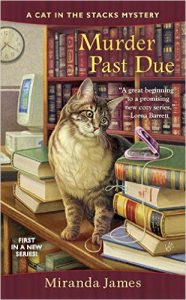 Escape Rating B: I’m here for Diesel. Not just because I’ve always wanted a Maine Coon, but because he’s just sweet and charming – and large – but also because he’s intelligent and empathetic but on a cat scale and not a human one. There are quite a few cozy mystery series that feature cats – and why not? – but it’s refreshing that the cat in this series doesn’t solve the mysteries on his own and doesn’t mysteriously help his person solve them.
Escape Rating B: I’m here for Diesel. Not just because I’ve always wanted a Maine Coon, but because he’s just sweet and charming – and large – but also because he’s intelligent and empathetic but on a cat scale and not a human one. There are quite a few cozy mystery series that feature cats – and why not? – but it’s refreshing that the cat in this series doesn’t solve the mysteries on his own and doesn’t mysteriously help his person solve them. Fatal Enquiry (Barker & Llewelyn, #6) by
Fatal Enquiry (Barker & Llewelyn, #6) by 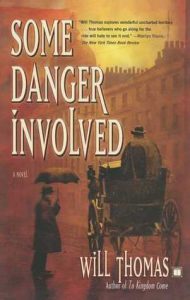 Most of the entries in the
Most of the entries in the  What makes the story rise to an A+, at least for this reader, was the delicious irony of the ending. Nightwine returns to London with deep, well-laid plans to eliminate Barker. Barker, forced to react rather than plan, still manages to maneuver Nightwine to what he believes will be his enemy’s downfall. It’s only after the results of that inevitable confrontation have been dealt with that Barker learns that both he and Nightwine have both been played by someone neither realized was even studying their board – let alone running it.
What makes the story rise to an A+, at least for this reader, was the delicious irony of the ending. Nightwine returns to London with deep, well-laid plans to eliminate Barker. Barker, forced to react rather than plan, still manages to maneuver Nightwine to what he believes will be his enemy’s downfall. It’s only after the results of that inevitable confrontation have been dealt with that Barker learns that both he and Nightwine have both been played by someone neither realized was even studying their board – let alone running it. The Bodies in the Library (First Edition Library Mystery, #1) by
The Bodies in the Library (First Edition Library Mystery, #1) by  The discovery of a body in the Society’s library, the morning after a contentious meeting of a local writers’ group, seems a bit too much like it’s straight out of the pages of one of the Agatha Christie novels sitting on a nearby shelf, The Body in the Library.
The discovery of a body in the Society’s library, the morning after a contentious meeting of a local writers’ group, seems a bit too much like it’s straight out of the pages of one of the Agatha Christie novels sitting on a nearby shelf, The Body in the Library. Speaking of media, however, the audio was fine, and it certainly got me over the rough first third of the book that drove me away the first time around. So I’m glad I picked it up – even though once the story finally got started I got more than caught up in it enough to want to find out whodunnit a whole lot faster than audio would allow.
Speaking of media, however, the audio was fine, and it certainly got me over the rough first third of the book that drove me away the first time around. So I’m glad I picked it up – even though once the story finally got started I got more than caught up in it enough to want to find out whodunnit a whole lot faster than audio would allow. The Marlow Murder Club (Marlow Murder Club, #1) by
The Marlow Murder Club (Marlow Murder Club, #1) by  Recommended, pretty much everywhere as a readalike for
Recommended, pretty much everywhere as a readalike for  The other thing I really liked was that, while the local police were completely overwhelmed by a serial killer in their tiny town, the reasons they were overwhelmed were much easier to understand and empathize with than the lackluster performance of the local constabulary in
The other thing I really liked was that, while the local police were completely overwhelmed by a serial killer in their tiny town, the reasons they were overwhelmed were much easier to understand and empathize with than the lackluster performance of the local constabulary in  A Mischief of Rats by
A Mischief of Rats by 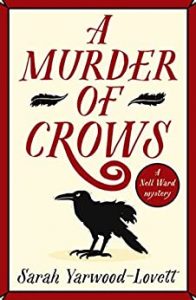 Whichever of her two personas is her alter ego, both of them are entirely too busy during the jam-packed weekend this story takes place.
Whichever of her two personas is her alter ego, both of them are entirely too busy during the jam-packed weekend this story takes place. Escape Rating B-: This third book in the
Escape Rating B-: This third book in the  I admit that this is a ‘me’ thing that may not be a ‘you’ thing. Howsomever, for this reader it feels like Nell’s romantic trials and tribulations are a bit over the top, particularly as her rich and aristocratic background – along with her surprisingly functional relationship with her parents – seem to have insulated her from a whole lot of regular stresses and issues to the point where over-the-top is the only direction left.
I admit that this is a ‘me’ thing that may not be a ‘you’ thing. Howsomever, for this reader it feels like Nell’s romantic trials and tribulations are a bit over the top, particularly as her rich and aristocratic background – along with her surprisingly functional relationship with her parents – seem to have insulated her from a whole lot of regular stresses and issues to the point where over-the-top is the only direction left.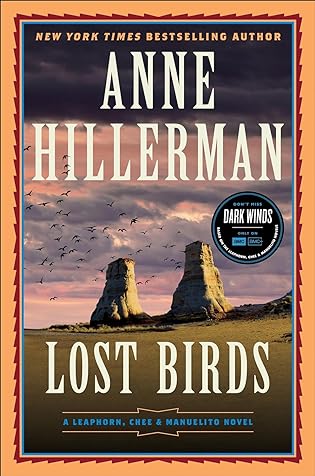 Lost Birds (Leaphorn, Chee & Manuelito #27) by
Lost Birds (Leaphorn, Chee & Manuelito #27) by 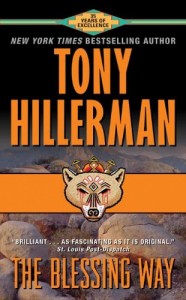 Especially, but absolutely not exclusively, to the ‘Legendary Lieutenant’ himself, retired Navajo Nation Police Lieutenant Joe Leaphorn – the original protagonist of this series back when it began back in 1970 in
Especially, but absolutely not exclusively, to the ‘Legendary Lieutenant’ himself, retired Navajo Nation Police Lieutenant Joe Leaphorn – the original protagonist of this series back when it began back in 1970 in  All of which made Lost Birds another enthralling chapter in this long-running saga. While I don’t think a new reader would need to start back at the very, very beginning, picking this series up with
All of which made Lost Birds another enthralling chapter in this long-running saga. While I don’t think a new reader would need to start back at the very, very beginning, picking this series up with 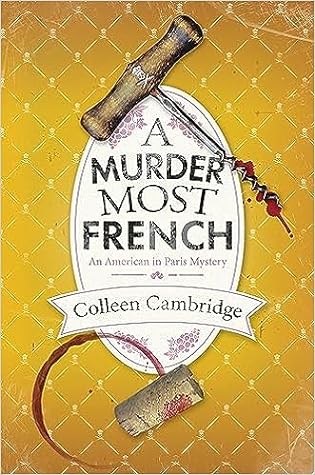 A Murder Most French (American In Paris Mystery, #2) by
A Murder Most French (American In Paris Mystery, #2) by  Julia Child is too busy learning French cooking, living her larger-than-life life in Paris AND at the beginning of writing her masterpiece,
Julia Child is too busy learning French cooking, living her larger-than-life life in Paris AND at the beginning of writing her masterpiece, 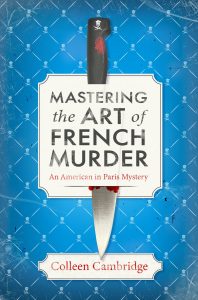 Escape Rating A+: If you loved the first book in this series – and who didn’t? – you will run, not walk to get this second book because it’s every bit as charming as the first. If you still need a bit of convincing, I’m going to get right to that.
Escape Rating A+: If you loved the first book in this series – and who didn’t? – you will run, not walk to get this second book because it’s every bit as charming as the first. If you still need a bit of convincing, I’m going to get right to that. Close to Death (Hawthorne & Horowitz, #5) by
Close to Death (Hawthorne & Horowitz, #5) by 